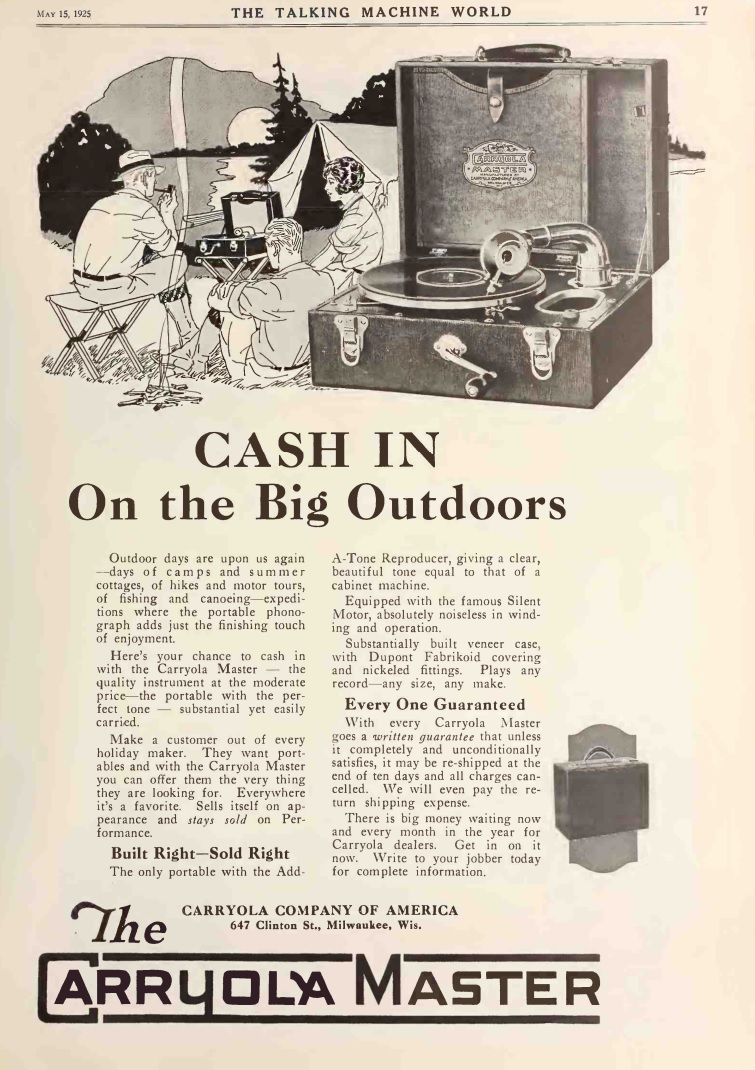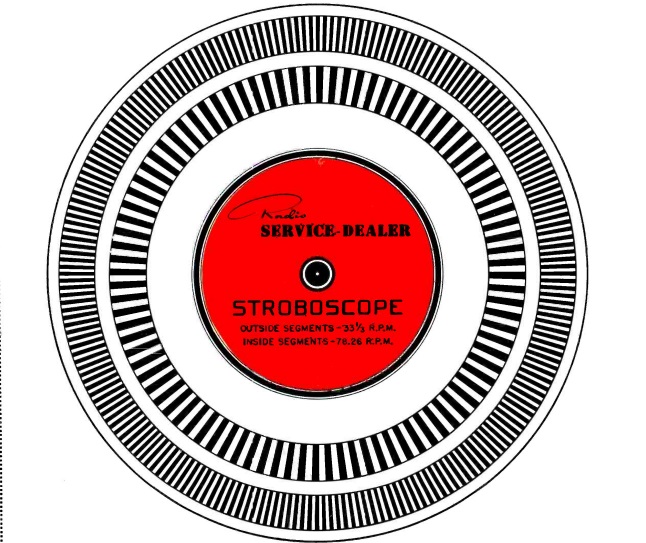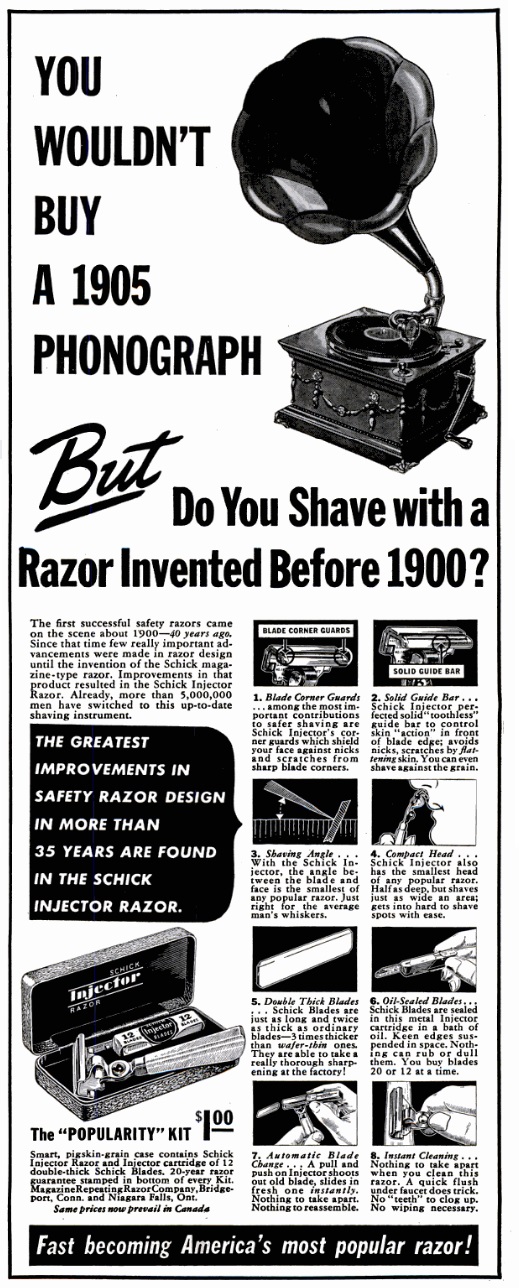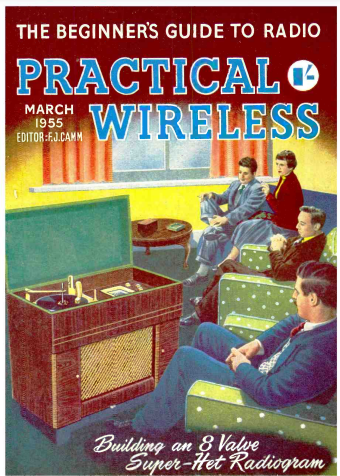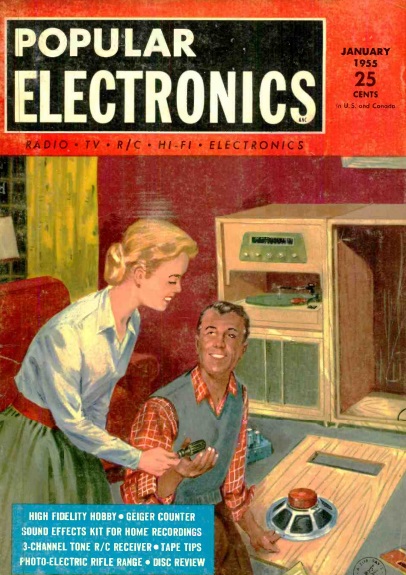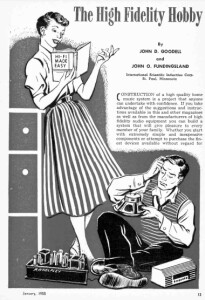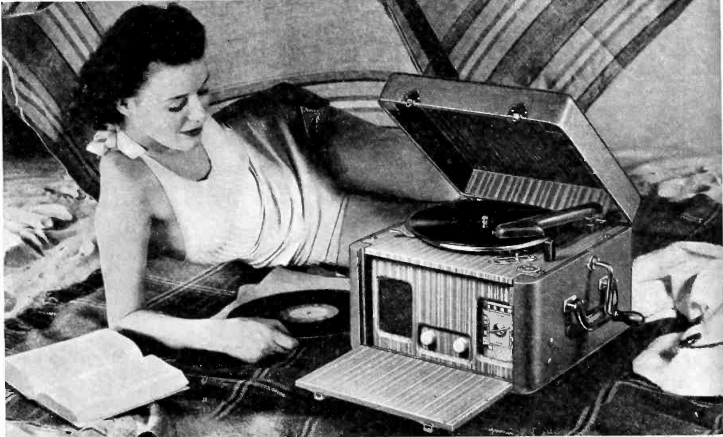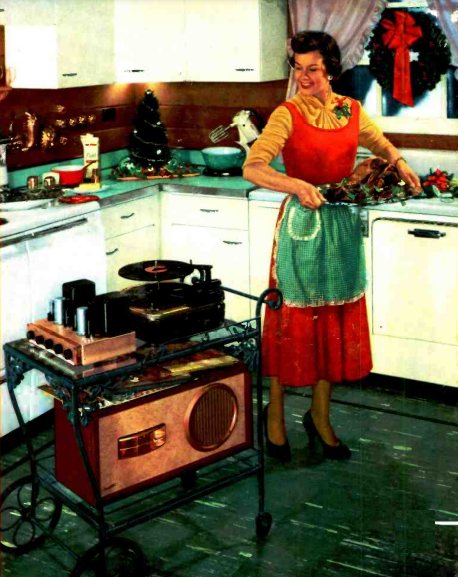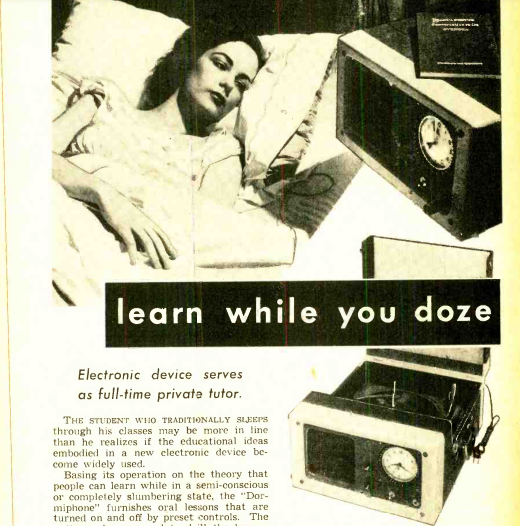 Shown here, in the June 1955 issue of Popular Electronics, is French actress Jeanne Demery hard at work learning Swedish for an upcoming play, all while she sleeps. We’ve reported previously (here, here, and here) about the concept of sleep learning. According to Wikipedia, it doesn’t work, but as a kid, it sounded reasonable to me, and sounded like a good way of bypassing the drudgery of studying. I had to sleep anyway, so it seemed reasonable to take advantage of that time to learn.
Shown here, in the June 1955 issue of Popular Electronics, is French actress Jeanne Demery hard at work learning Swedish for an upcoming play, all while she sleeps. We’ve reported previously (here, here, and here) about the concept of sleep learning. According to Wikipedia, it doesn’t work, but as a kid, it sounded reasonable to me, and sounded like a good way of bypassing the drudgery of studying. I had to sleep anyway, so it seemed reasonable to take advantage of that time to learn.
The problem I ran into was the lack of suitable equipment. The tape had to play while I was deep asleep, and ideally keep repeating. I had a tape recorder, but once the tape ran out after a few minutes, I would be left without anything to learn.
With one of the devices shown in this article, I would have been all set up. It looked like a phonograph with a timer, but it could also be used as a magnetic recorder. The normal cartridge was replaced with a magnetic head, and speech could be recorded onto a magnetic disc. The device was the Dormiphone, and was manufactured by Modernophone, Inc., 30 Rockefeller Plaza, New York. It retailed for $229.50, which works out to $2747 in 2025 dollars. That would have been out of my price range as a kid, so I guess that was another reason why I had to do my learning the traditional way.
(We searched in vain for more information about actress Jeanne Demery, but about the only thing we were able to find was this newspaper article also detailing her sleep learning achievements.)

